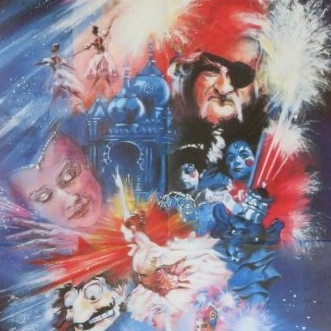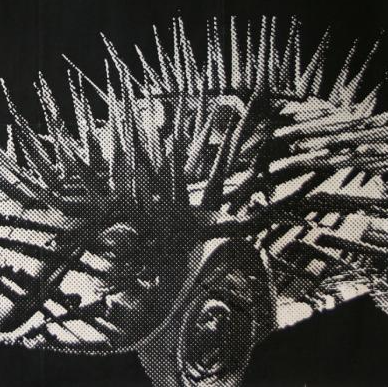The Pillow Book
Peter Greenaway's sexy calligraphy movie about a woman with a body writing fetish seeking revenge against her father's pimp through the medium of literature had trouble finding an audience, would you believe?

UK poster | Film Four Distributors
1996 — UK/Netherlands/France/Luxembourg
Presented by KASANDER & WIGMAN, WOODLINE FILMS and ALPHA FILMS, and made with the support of the EURIMAGES FUND OF THE COUNCIL OF EUROPE and het NEDERLANDS FONDS VOOR DE FILM in association with DELUX PRODUCTIONS, le STUDIO CANAL+ and CHANNEL FOUR FILMS.
Cast: VIVIAN WU, KEN OGATA, EWAN McGREGOR, YOSHI OIDA, HIDEKO YOSHIDA and JUDY ONGG
Director and Writer: PETER GREENAWAY
Producer: KEES KASANDER
Executive Producers: TERRY GLINWOOD, JEAN‑LOUIS PIEL and DENIS WIGMAN
Editors: CHRIS WYATT and PETER GREENAWAY
Cinematographer: SACHA VIERNY
Production Designers: WILBERT VAN DORP and ANDRÉE PUTMAN with EMI WADA
Costume Designers: EMI WADA with DIEN VAN STRAALEN, KOJI TATSUNO and MARTIN MARGIELA
Sound: GARTH MARSHALL
Special Lighting Effects: REINIER VAN BRUMMELEN
© Kasander & Wigman Productions / Alpha Films / Woodline Films
Peter Greenaway’s sexy calligraphy movie (a phrase I’m just going to keep using here so get used to it) is a strange film that is difficult to classify and as a result probably even harder to sell. This is perhaps exemplified by the trailer that Film4 cut for it. Fresh from the success of Trainspotting (1996) earlier in the year, it plays up Ewan McGregor and pitches the film as a romance between whitey and a sexy Asian lady with a body writing fetish, which… sort of… though I think anyone who went to see it with that in mind would probably be disappointed at best. I do really mean ‘at best’; there is a reason the BBFC advisory says “strong gore”. I’m sure I’ve seen much stronger, but in terms of unpleasantness, this thing’s got some pretty disturbing and stomach-churning stuff. I have this vague image of couples going to see it at the cinema on a hot date suckered in by the marketing. It’s actually kind of funny.
Anyway, yes. What is this film, other than a sexy calligraphy movie? Part romance, part revenge thriller, all Künstlerroman. Except it’s not a novel, so I guess it’d have to be ‘Künstlerspielfilm’ or something. We follow Nagiko (Vivian Wu), an attractive young model who’s into body writing for reasons that drift more than slightly into the psychosexual. Her old man is a writer and calligrapher who celebrates her birthday by writing good fortune-y stuff on her face. He’s also however is in the thrall of his Svengali-esque publisher (Yoshi Oida), and she finds herself married off to the publisher’s boorish son. Her husband, resentful of her love of art and literature, burns her books, whereupon she flees to Hong Kong. Her bid to find someone to engage with her intellectually and sexually and with an inkbrush takes a turn when would-be lover Jerome (Ewan McGregor) invites her to write on him instead, prompting her to reconsider her relationship with art. Encouraged by an acquaintance to submit her work to a publishing house he works for, she finds that the publisher in question is the same as her father’s, and he’s having an affair with the man who would be her paramour, and so she starts plotting vengeance.
Got all that? It’s one of those films that’s dense but actually fairly simple; it just presents it in a vaguely complicated way. It’s also a bit pretentious, because, you know, Greenaway. This was, as far as I can tell, the last of his films that Channel 4 invested in, having thrown money into all his features since ‘82’s The Draughtsman’s Contract (inclusive). This is perhaps indicative of the change in the company’s output more than anything, as it shifted away from more overtly artsy-fartsy productions. Following the Broadcasting Act 1990, the channel had to become more commercially minded, which naturally meant investing more in stuff they could actually sell (previously they were funded by selling all advertising rights to the ITV franchise holders to re-sell as they wished, but the Act required them to start selling ad space the same way as everyone else, and as they were snagging TV rights to these films with their investment, naturally they had to be saleable as well). While this brought in great successes, such as Four Weddings and a Funeral (1994), The Madness of King George (1994) and the aforementioned Trainspotting, it didn’t really leave much room for full on arty gubbins. One wonders how it was that this thing fell through the cracks. It can’t have been cheap.
(I guess that makes it sound like all their early output was unmarketable art-with-a-capital-f which isn’t really accurate. I mean, they did still do all those Merchant-Ivory films after all. The art film side skewed very much the minority overall, but it was nevertheless squeezed out by the need for more commercial concerns.)
It strikes me that focussing on the thriller aspect would be a better way to sell it than the romantic aspect. It’d at least make the tonal shifts less jarring to potential audiences. Also, McGregor’s only really in the second act. Oh, well, anyway, the plot is largely engaging, though if you want something snappily paced this isn’t it (also if you want something with a lot of naked women you might be in for a shock as well, as despite the focus on Vivian Wu in states of undress, the thing has a lot more full frontal male nudity), the major through line of the film being Nagiko’s artistic development more than anything else. Plot wise, at any rate, as regardless of all that, like a lot of Greenaway’s output, it feels somewhat like the real focus is more on the visual artistry of the film itself. And it is, of course, rather sumptuous, continuing the editing experiments of the earlier Prospero’s Books (1991) to create a filmic collage from its images. Different scenes drift and collide on top of each other giving a distinctive look and feel to the film. Meanwhile, his penchant for recreating paintings in his work continues unabated, although not exactly subtly. Through the magic of the aforementioned editing techniques, it goes and shows you the pictures it’s imitating while it’s going on. Still, it follows a different style to the more typically European renaissance art that punctuates many Greenaway’s films, instead, as you might expect, focussing more on Asian artwork. There’s a heavy focus on people and rooms rather than the more nature-based scenes of The Draughtman’s Contract or Drowning by Numbers (1988), along with the inherently urban setting of the meat of the story. As such, the film has a much more overtly stylised look, with many more stark, abstract sets. It doesn’t quite gel well with the location shooting; had to get that Hong Kong shoot out of your system before the handover, I guess; although the argument could be made that that is the point. The main characters are ruled by art (and their fetishization thereof), but it’s ultimately divorced from the reality of the world they inhabit. I’m not sure I quite believe that, but then again, the protagonist and antagonist are both obsessed with and compelled to do absurd and awful things for their love of art, occasionally to the bemusement of others.
One of them fucks a book in this film, by the way.
The elephant in the room here however is the question of Orientalism. It’s a film by a bunch of Europeans about an Asian topic, after all. And, yes, probably. I suppose typically ‘Orientalism’ is used to refer to Western conceptions of the Middle East, so if we’re getting into semantics, the film more engages in Japonisme and Chinoiserie. Anyway, that’s by-the-by. The film does rather seem to engage in anachronistic weirdness with regards to Eastern culture; for instance, in the flashbacks to the heroine’s youth that make up much of the film’s first act, basically the entire cast are clad in kimono throughout, which all feels a bit implausible given as it’s implicitly the 1970s. It could perhaps be taken as something to suggest their aesthete nature; Nagiko’s husband is conspicuous in not wearing traditional dress. Certainly, there seem to be enough Japanese people involved in the film that presumably someone would point out if it was being moronic, and a cursory glance at Japanese sites seems to suggest it didn’t really bother them all that much. Given as by the third act the film is taking place in the then-future (much is made of the impending millennial of Sei Shōnagon’s eponymous book, which would have been 2002), I suppose time is another abstract concept.
At time of writing, The Pillow Book is not on any streaming service. I recommend JustWatch for keeping up with where films are streaming (including this one!). Alternatively, physical copies are reportedly available for rent via Cinema Paradiso.
The film presently has an 18 rating (last being submitted in 2011), with the BBFC citing "strong gore and sexualised nudity". There's quite a bit of that.



